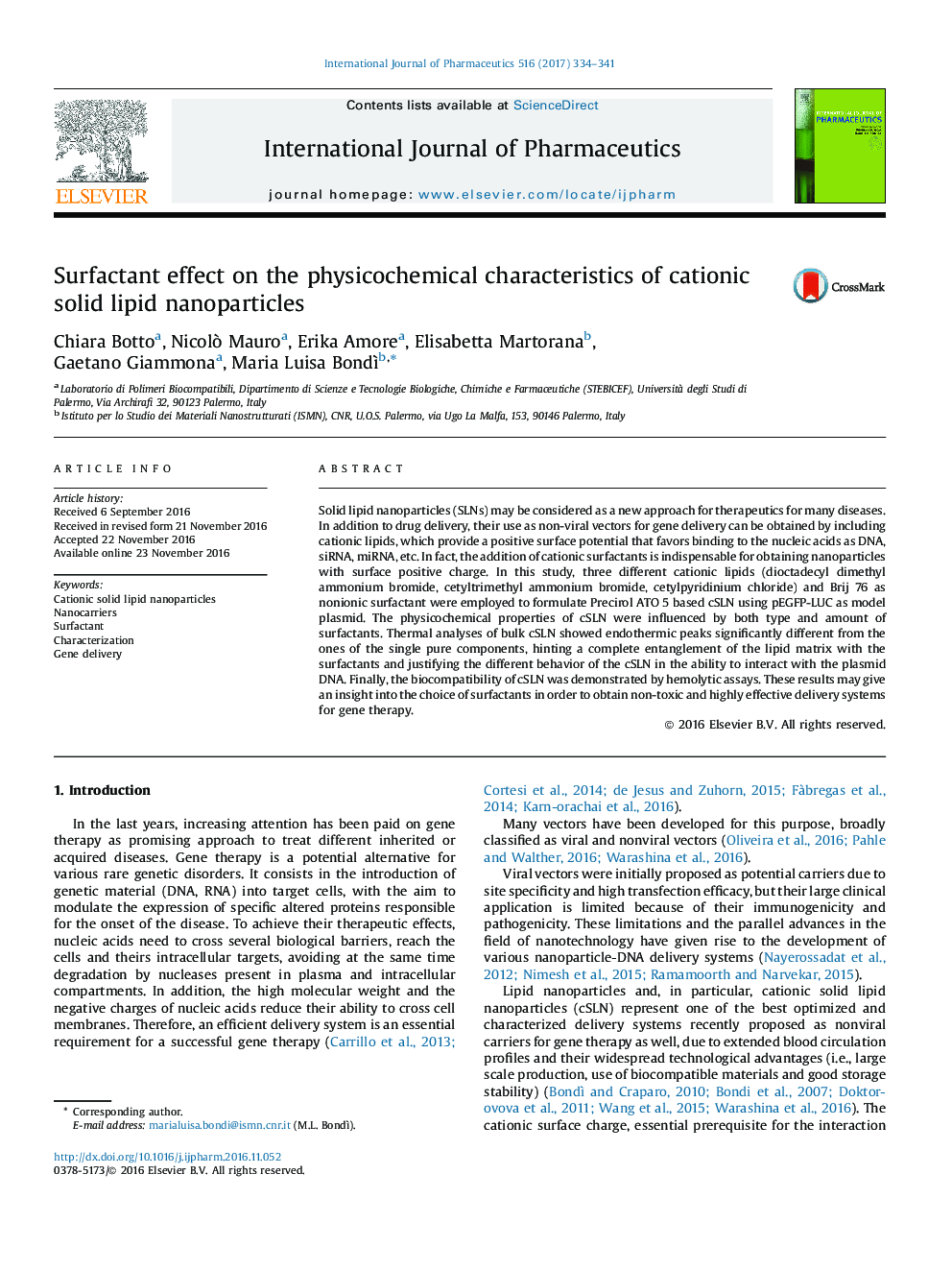| Article ID | Journal | Published Year | Pages | File Type |
|---|---|---|---|---|
| 5550665 | International Journal of Pharmaceutics | 2017 | 8 Pages |
Solid lipid nanoparticles (SLNs) may be considered as a new approach for therapeutics for many diseases. In addition to drug delivery, their use as non-viral vectors for gene delivery can be obtained by including cationic lipids, which provide a positive surface potential that favors binding to the nucleic acids as DNA, siRNA, miRNA, etc. In fact, the addition of cationic surfactants is indispensable for obtaining nanoparticles with surface positive charge. In this study, three different cationic lipids (dioctadecyl dimethyl ammonium bromide, cetyltrimethyl ammonium bromide, cetylpyridinium chloride) and Brij 76 as nonionic surfactant were employed to formulate Precirol ATO 5 based cSLN using pEGFP-LUC as model plasmid. The physicochemical properties of cSLN were influenced by both type and amount of surfactants. Thermal analyses of bulk cSLN showed endothermic peaks significantly different from the ones of the single pure components, hinting a complete entanglement of the lipid matrix with the surfactants and justifying the different behavior of the cSLN in the ability to interact with the plasmid DNA. Finally, the biocompatibility of cSLN was demonstrated by hemolytic assays. These results may give an insight into the choice of surfactants in order to obtain non-toxic and highly effective delivery systems for gene therapy.
Graphical abstractDownload high-res image (115KB)Download full-size image
